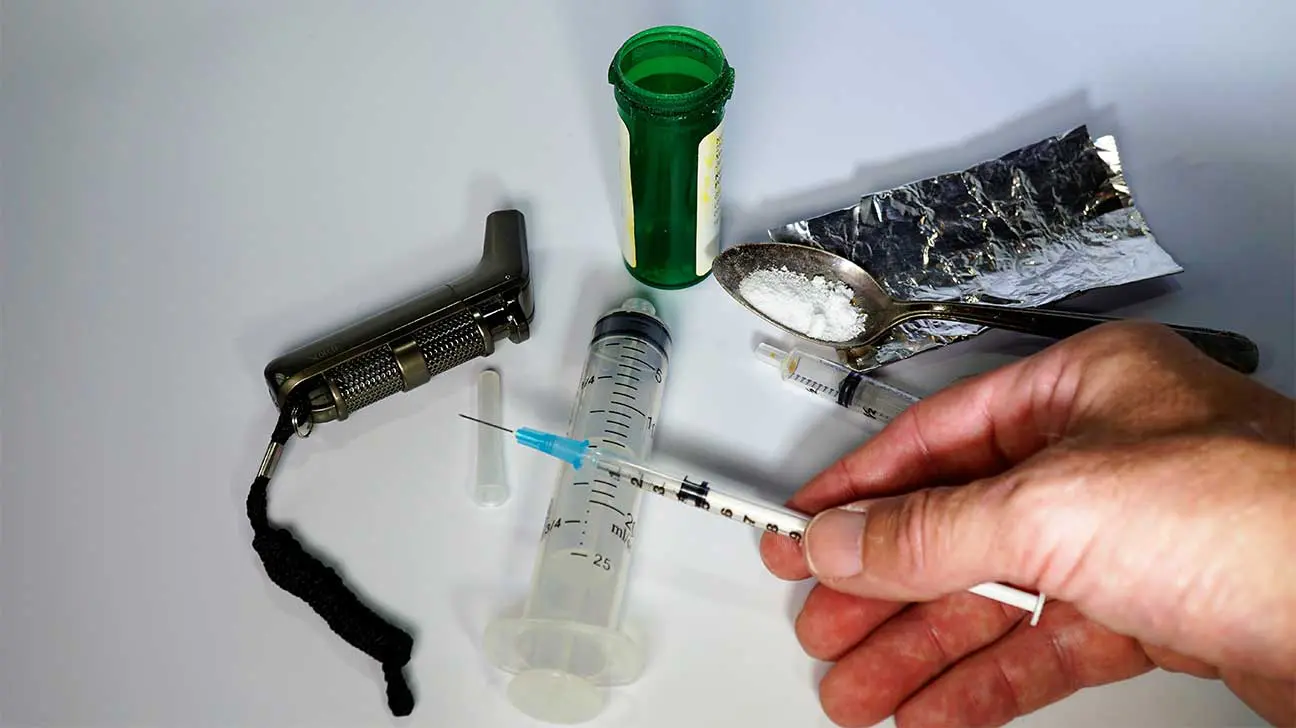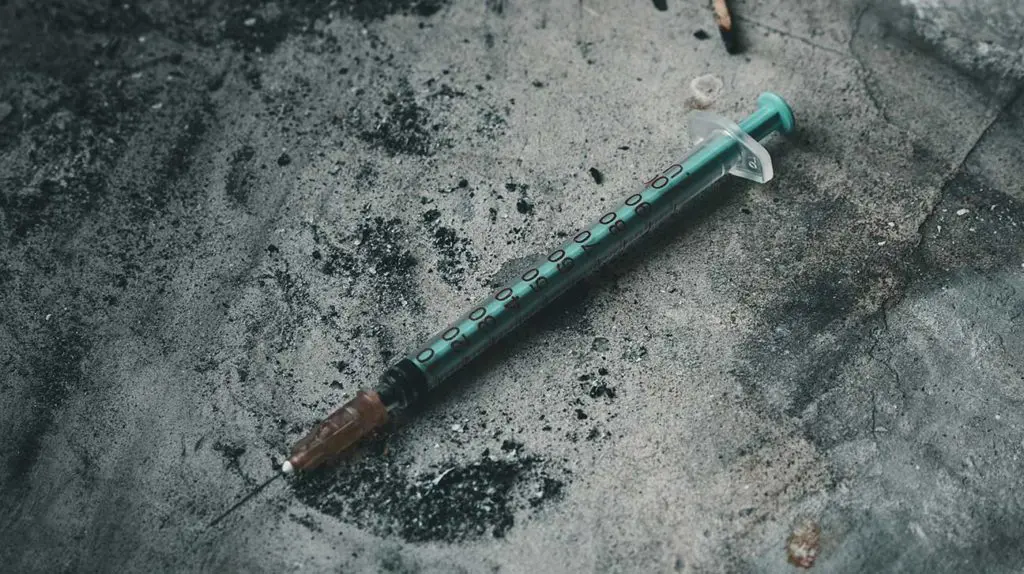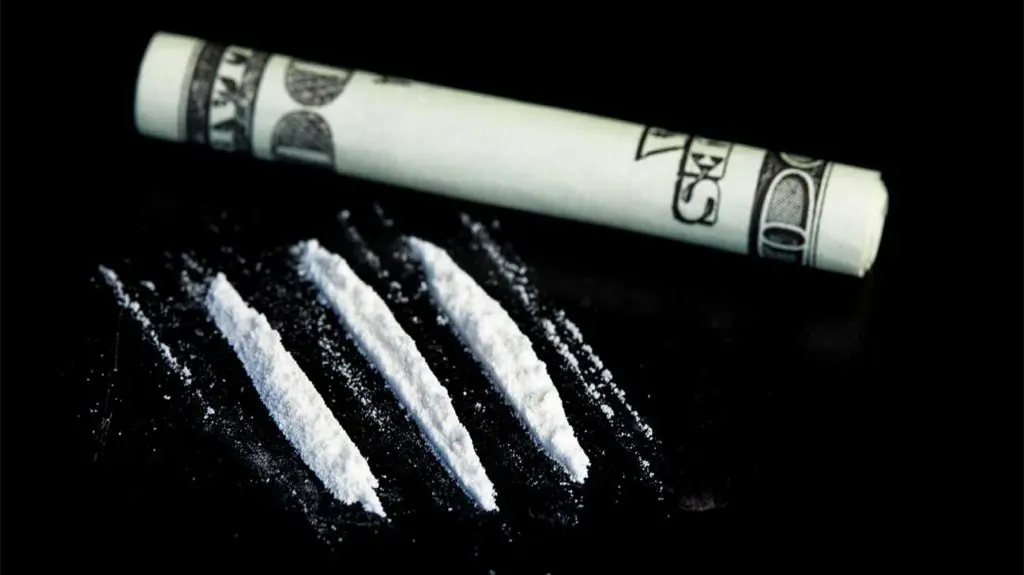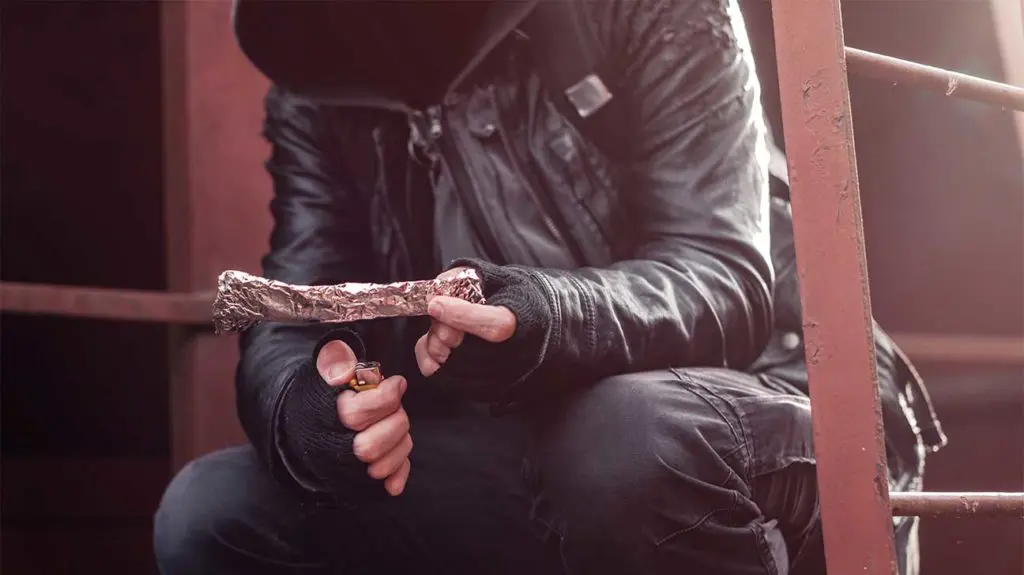
Heroin is an illicit opioid drug that is used by hundreds of thousands of people in the United States each year.
One of the most visible signs of heroin use in a family member or teenage child is the possession of drug paraphernalia. Drug paraphernalia refers to certain tools or supplies that are utilized in order to ingest drugs.
Examples of common drug paraphernalia include:
- plastic baggies
- pill bottles
- rolling papers
- lighters
- matches
Identifying Heroin Paraphernalia
Heroin is classified by the U.S. Drug Enforcement Agency (DEA) as a Schedule I controlled substance, meaning it has a high potential for abuse, addiction, and no acceptable medical use.
Heroin can be used by way of:
- injecting heroin
- snorting heroin
- smoking heroin
- plugging heroin
People who use heroin may possess different forms of drug paraphernalia depending on whether they snort, smoke, shoot, or plug heroin.
Heroin is generally used for its rapid, euphoric effects or to stave off opioid withdrawal symptoms among those addicted to prescription opioids.
Shooting Heroin Paraphernalia
About half of people who use heroin report injecting it. Shooting heroin can provide the quickest effects, although the high of injecting heroin is generally short-lived.
Drug paraphernalia associated with shooting heroin:
- needle/syringes
- cotton balls
- heroin spoon
- rubber tubing
- shoe-laces
- belts
Heroin can be injected into the muscles, veins, or under the skin. People who inject heroin will need to either heat heroin to create an injectable substance, or dissolve black tar or powder heroin in liquid to be injected.
Objects such as rubber tubing, extra-long shoelaces, or belts may be used to “tie off” a person’s arm to prepare a vein for injection.
Snorting Heroin Paraphernalia
Snorting heroin is less common than injecting or smoking it. This is because it takes longer to feel the effects of heroin when it is snorted versus when it is injected or smoked.
Drug paraphernalia associated with insufflation:
- rolled up dollar bills
- white powder residue on objects
- cut-up straws
- plastic pen cases
- hollowed pens
- razor blades
People who snort heroin may leave behind white powder residue on hard surfaces or objects, such as straws. Insufflation can also cause runny nose, frequent sniffling, and nosebleeds.
Smoking Heroin Paraphernalia
Black tar heroin—a solid, tar-like form of heroin—is commonly smoked or injected.
People who smoke heroin may use a glass pipe or heat it up on aluminum foil to produce inhalable vapors—a practice sometimes referred to as ‘chasing the dragon’.
Drug paraphernalia associated with smoking heroin:
- burnt squares of aluminum foil
- lighters
- matches
- candles
- straws
- heroin pipes
Foil smoking is one of the most common ways heroin is used, following heroin injection.
Smoking heroin can result in effects within minutes and doesn’t carry risks of contracting infectious diseases such as HIV or hepatitis associated with needle-sharing.
Where Do You Find Heroin Paraphernalia?
Many people who use illicit drugs like heroin, cocaine, or methamphetamine do so in enclosed spaces, such as a bathroom or bedroom, for privacy.
People who live alone, or are houseless, may use heroin anywhere, including public living spaces.
Some drug paraphernalia, such as cotton balls, may be found in the sink or waste bin.
Residue from powdered heroin may also be left on hard surfaces, such as bathroom counters, tables, desks, or paraphernalia used for drug use.
Finding Treatment For Heroin Abuse And Addiction
Recovering from heroin addiction is possible with treatment. Treatment programs for heroin addiction are available across the United States.
Quitting heroin can be dangerous to attempt alone.
Entering a medically supervised detox program, followed by an inpatient or outpatient drug rehab program, is highly recommended for people who are trying to overcome an addiction to heroin.
If you’re looking for treatment for yourself or a loved one, call our helpline today to speak to an addiction specialist about finding a drug addiction treatment program that’s right for you.
Addiction Resource aims to provide only the most current, accurate information in regards to addiction and addiction treatment, which means we only reference the most credible sources available.
These include peer-reviewed journals, government entities and academic institutions, and leaders in addiction healthcare and advocacy. Learn more about how we safeguard our content by viewing our editorial policy.
- U.S. Drug Enforcement Administration (DEA)—Drug Scheduling
https://www.dea.gov/drug-scheduling - U.S. National Institute on Drug Abuse (NIDA)—Heroin DrugFacts
https://www.drugabuse.gov/publications/drugfacts/heroin - U.S. National Institute on Drug Abuse (NIDA)—What is heroin and how is it used?
https://www.drugabuse.gov/publications/research-reports/heroin/what-heroin - U.S. National Library of Medicine: NCBI—Comparing Injection and Non-Injection Routes of Administration for Heroin, Methamphetamine, and Cocaine Uses in the United States
https://pubmed.ncbi.nlm.nih.gov/21745047/ - U.S. National Library of Medicine: PubMed—Foil Smoking/Heroin Inhalation
https://pubmed.ncbi.nlm.nih.gov/31166873/





